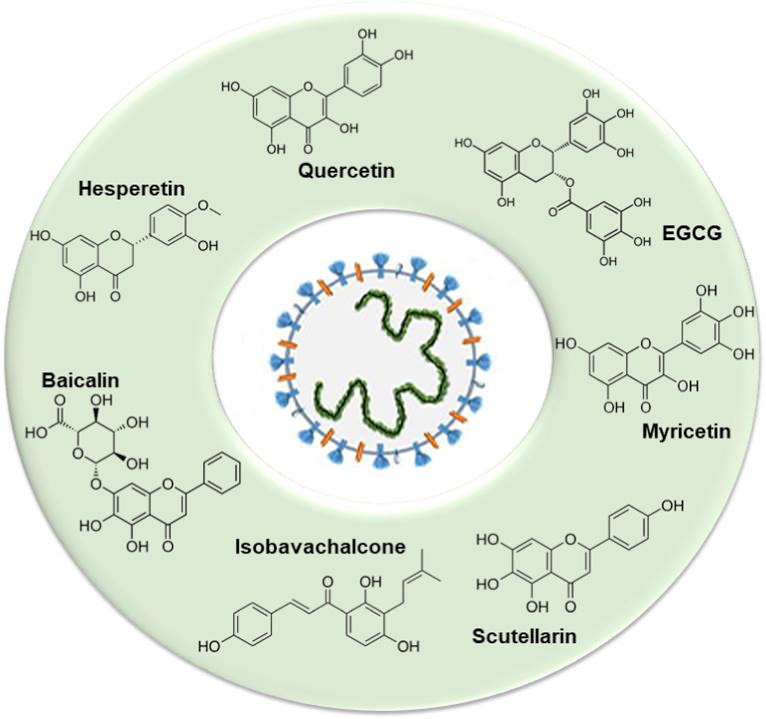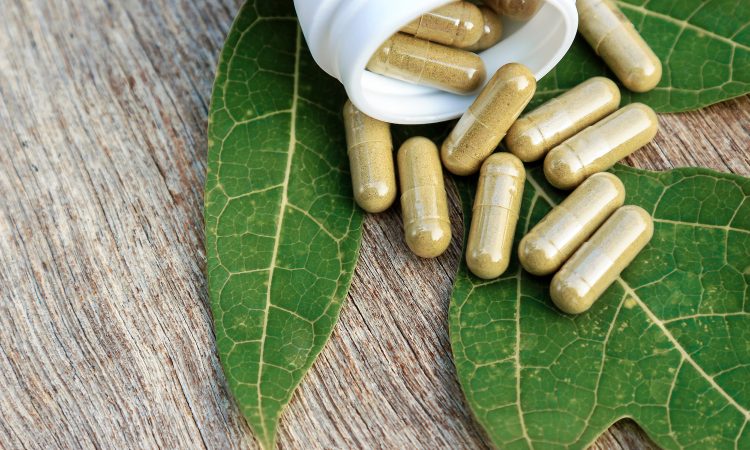The pandemic spread rapidly. We now know that this new virus has at least two main advantages that allow it to be more virulent and easily spread within the population:
- Its ”S” protein has an affinity 10 to 20 times greater than that of the first SARS-CoV virus of 2003, for the ACE2 receptor (a transmembrane protein present in practically all tissues of the human body and responsible for vasoconstriction and blood pressure),
- The presence of individuals who are asymptomatic or have very few symptoms and have a high viral load.
It is therefore important to quickly identify solutions that could be used to prevent or fight infections. I am going to comment here on two scientific papers that have just been released. They describe very well what SARS-CoV-2 is, what it uses to infect the human body and to reproduce itself, with the aim of properly establishing targets for prevention or potential treatment with natural products.
What is the possible role of natural products?
You should know that a large number of products and/or molecules were already known to have antiviral effects, for a large number of viruses:
- Coronavirus,
- Dengue virus,
- Enteroviruses,
- Hepatitis B,
- The herpes virus,
- Influenza and
- HIV.
Thus, there are plant molecules, phytonutrients, which can act by reducing the ability of the virus to enter cells or by reducing its replication capacities. There are also a large number of molecules and/or natural products with anti-inflammatory, antioxidant or immune system modulating effects that could be used to reduce risks or fight symptoms. These molecules can come from natural products or from food, as is the case with quercetin. Today we will focus on finding new antivirals.
These two articles, which I will tell you about, have just been published by two different research teams:
- 5 Italian scientists who review 85 scientific articles on the subject of flavonoids and viral infections (Roles of Flavonoids against Coronavirus Infection.),
- 3 scientists from a university in Brazil who are reviewing 72 scientific articles on natural antiviral molecules (Natural products’ role against COVID-19).
These are in-depth analyzes of the available knowledge that could lead to new approaches to prevent or treat infections. I also looked at a few additional articles whose references are listed at the end of this article.
Natural products can be helpful
The authors report that natural products are relevant for several reasons:
- Consider all treatment options as long as there are no effective approaches available.
- Treatment may include reducing symptoms or inhibiting virus replication.
- It is possible to test a large number of molecules, whether they are chemical, or naturally occurring.
- Natural molecules have the advantage of being of low or no toxicity.
- Some natural antiviral molecules are already known and can serve as a starting point for research.
- Several of these molecules have preiotropic effects which could be synergistic: they act on several aspects at the same time (e.g.: antiviral activity, antioxidant effects and or reduction of inflammation).
- Certain molecules could benefit from a senolytic (anti-aging) effect, which would reduce viral transmission while being beneficial for the people most at risk (the elderly; we will come back to this in a future article).
- Specifically, for coronaviruses, scientists learned from following the SARS-CoV-1 in 2003 that molecules capable of inhibiting their activities come from a few classes of phytonutrients: flavones, flavonols, fatty acids, tannins, terpenes and alkaloids. This figure shows some molecules whose antiviral effects are already well documented for different viruses.

In the search of new molecules
By analyzing natural molecules that are already active, and there are many identified, it is possible to test the activity of related plants or even plants known to produce these families of molecules. Molecular modeling, that is to say the analysis of the structure of the proteins of the virus, also helps to guide research. Without going into detail, there is a great deal of work in progress that could identify new antivirals from natural products.
However, it is not enough to have molecules and to identify a plant that contains them to think of obtaining a natural health product against Covid-19. Several other facets must be considered. Here are a few examples:
- What dosage is required to achieve antiviral effectiveness?
- Is this molecule available in sufficient quantity in the plant?
- What part of the plant should be used?
- Is it bioavailable (adsorbed if consumed)?
- Does it pass into the bloodstream without being transformed by the gut microbiota?
- Does it stay in the bloodstream long enough to reach the effective dose and to act in a meaningful way?
- Etc.
These are called pharmacokinetic parameters. In some cases, nothing is known, but for several of these molecules, these questions have already been studied. Some molecules are known to have other health benefits such as the polyphenols in green tea or olives. As some pharmacokinetic parameters and the toxicity of these molecules have already been studied, the development of a treatment could be accelerated. It will still be necessary to validate the potential benefits by performing randomized clinical studies on their antiviral effects.
But why not consider the products already in use?
Analysis of usage history
Another approach is to analyze what was used by Traditional Chinese Medicine physicians. The protocols of Traditional Chinese Medicine have already made it possible to identify new antivirals, one of which won a Nobel Prize in medicine in 2015.
In China, traditional medicine is used alongside modern medicine. Given the very large number of the Chinese population, it is possible to quickly accumulate some usage data. Two recent scientific papers report usage data for different regions of China. These two articles were mentioned, by a pharmacist collaborating on the Vitoli blog, in an article on Covid-19 and supplements.
There is a third interesting article that has just been published. It is about a meta-analysis (analysis of a large number of published studies) of efficacy and safety. The article reports the analysis of 18 randomized clinical studies, including 2275 patients. These studies compared the results of traditional medicine to the results of modern medicine. The study finds a large number of advantages of Traditional Chinese Medicine for different parameters:
- the clinical cure rate,
- the severity classification,
- the length of hospitalization,
- classification on all clinical symptoms,
- time to reduce fever,
- the cough levels assessed,
- reduction of cases of fatigue,
- fatigue levels,
- viral load and
- markers of inflammation.
In addition, no severe side effects were observed with Traditional Chinese Medicine against Covid-19. Researchers suggest it could be used to fight this pandemic.
Here, I must admit that I am very skeptical of this kind of publication which seeks to demonstrate an advantage of one type of approach at the expense of another. I am convinced that the best solution would be to use the best of both worlds: serious traditional medicine and modern medicine. As I often repeat: ”The truth is surely not that all supplements are good or that they are all bad.”. All those who hold these words, one way or the other, are simply demonstrating that:
- Either they do not know enough to be able to properly assess the usefulness of quality natural health products available on the market,
- Either they have conflicts of interest that skew their statements.
This ongoing research on the identification of new antiviruses from natural products highlights that there is significant therapeutic potential in this area. Unfortunately, the quality of products on the market varies widely and few people are really aware of this.
I recommend that you remain critical and consider only uses that are based on valid reasons, and when doing so, using high quality products.
References:
- Ananda da Silva Antonio, a Larissa Silveira Moreira Wiedemannaand Valdir Florˆencio Veiga-Junior*. 2020. Natural products’ role against COVID-19. The Royal Society of Chemistry 2020. RSCAdv.,2020,10, 23379–23393.
- Ianevski A, Yao R, Fenstad MH, et al. Potential Antiviral Options against SARS-CoV-2 Infection. Viruses. 2020;12(6):642. Published 2020 Jun 13. doi:10.3390/v12060642
- Rosales-Mendoza S. Will plant-made biopharmaceuticals play a role in the fight against COVID-19?. Expert Opin Biol Ther. 2020;20(6):545-548. doi:10.1080/14712598.2020.1752177
- Russo M, Moccia S, Spagnuolo C, Tedesco I, Russo GL. Roles of flavonoids against coronavirus infection [published online ahead of print, 2020 Jul 28]. Chem Biol Interact. 2020;328:109211. doi:10.1016/j.cbi.2020.109211
- Xiong X, Wang P, Su K, Cho WC, Xing Y. Chinese herbal medicine for coronavirus disease 2019: A systematic review and meta-analysis [published online ahead of print, 2020 Jul 2]. Pharmacol Res. 2020;160:105056. doi:10.1016/j.phrs.2020.105056
- Yang Y, Islam MS, Wang J, Li Y, Chen X. 2020. Traditional Chinese Medicine in the Treatment of Patients Infected with 2019-New Coronavirus (SARS-CoV-2): A Review and Perspective. Int J Biol Sci. 2020;16(10):1708‐1717. Published 2020 Mar 15.
- Zhang D, Zhang B, Lv JT, Sa RN, Zhang XM, Lin ZJ. 2020. The clinical benefits of Chinese patent medicines against COVID-19 based on current evidence [published online ahead of print, 2020 May 5]. Pharmacol Res. 2020;157:104882.






